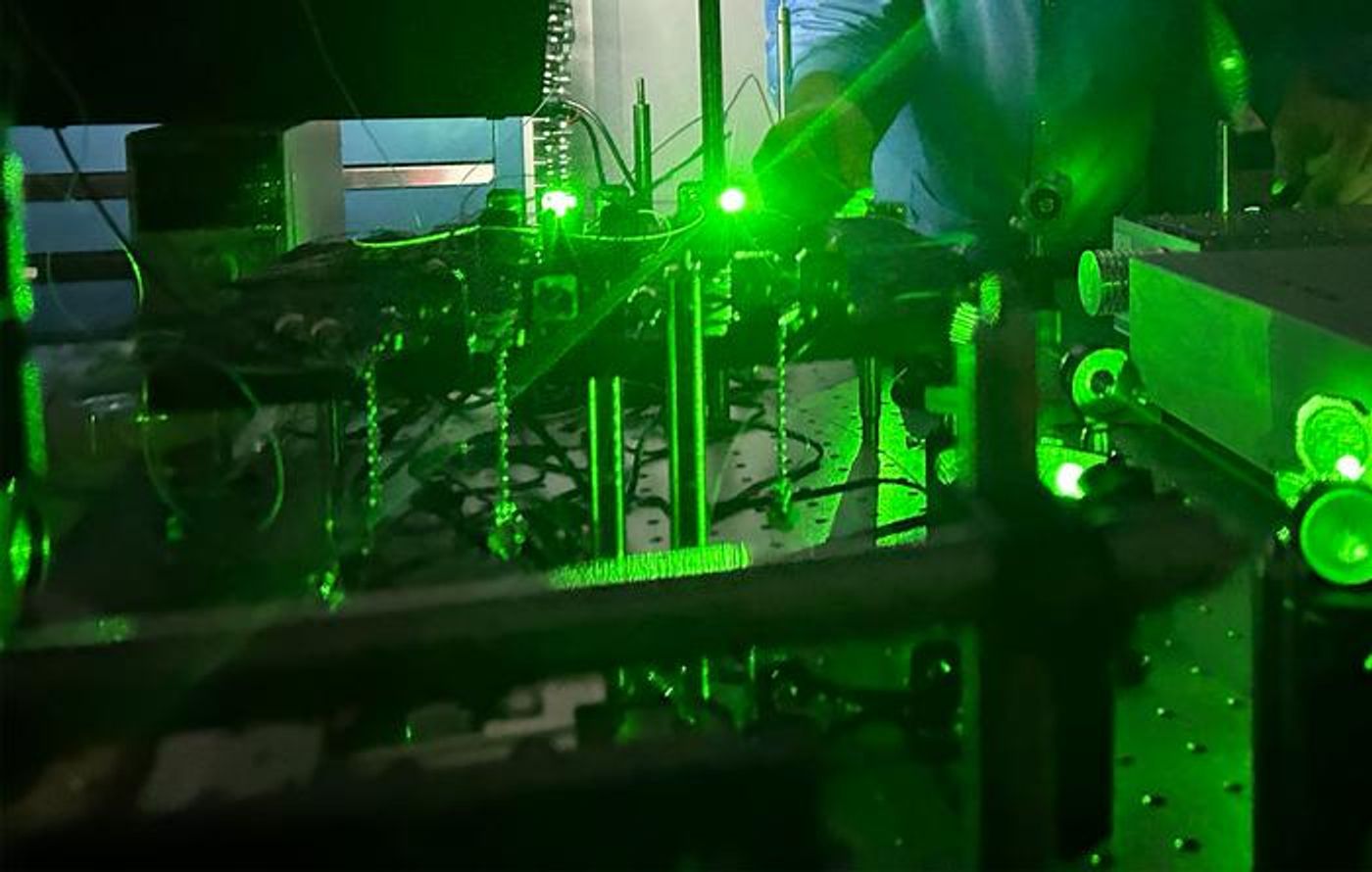Breakthrough in Quantum Computing: Laser-Controlled Barium Qubits
A recent study published in Quantum Science and Technology examines a novel method in controlling individual qubits, the quantum computing equivalent to a bit in classical computing, by separating laser beams. This separation creates four beams which are then focused four microns apart, or equivalent to four-hundredths of a single human hair’s width, with each focused beam targeting a qubit. This new and unparalleled study was conducted by researchers in the Institute for Quantum Computing (IQC) and Department of Physics and Astronomy at the University of Waterloo and holds the potential to be an enormous step in advancing the field of quantum computing.
Quantum computing is a quickly advancing technology that controls the law of quantum mechanics to make computations that are too difficult for classical computers, and is a multidisciplinary field that encompasses mathematics, physics, and computer science. Real-world examples of how quantum computing is being used include healthcare, artificial intelligence, financial modeling, drug discovery and development, and climate change, just to name a few.
“Our design limits the amount of crosstalk–the amount of light falling on neighboring ions–to the very small relative intensity of 0.01 per cent, which is among the best in the quantum community,” said Dr. K. Rajibul Islam, who is a professor in both the IQC and Department of Physics and Astronomy at Waterloo, and a co-author on the study. “Unlike previous methods to create agile controls over individual ions, the fiber-based modulators do not affect each other.”
For the study, the researchers used laser beams to target barium ions, which can be controlled using visible green light, and contrasts with traditional methods of controlling atoms using higher energy ultraviolet light. This allows the barium ions to be used as the zeros and ones of a single qubit, which is equivalent to the zeros and ones of a single bit in traditional computing. To separate the laser beams, the researchers used a waveguide chip to create 16 different light channels, with each being directed through optical lenses that are much like a telescope. The researchers then used accurate camera sensors to measure the focus and control of each laser beam.
Image of the green laser light that was used in thi study for controlling barium ions within qubits. (Credit: University of Waterloo)
“This work is part of our effort at the University of Waterloo to build barium ion quantum processors using atomic systems,” said Dr. Crystal Senko, who is a faculty member in both the IQC and Department of Physics and Astronomy at Waterloo, and a co-author on the study. “We use ions because they are identical, nature-made qubits, so we don’t need to fabricate them. Our task is to find ways to control them.”
2015 video from the University of Waterloo's Institute for Quantum Computing that explains the goal of their research.
This research holds enormous promise in controlling ions and processing quantum data for use in quantum computing, and the researchers envision scaling up their research for commercial use, someday.
What new discoveries in quantum computing will be made in the coming years and decades? Only time will tell, and this is why we science!
As always, keep doing science & keep looking up!
Sources: Quantum Science and Technology, Quantum Inspire, IBM, OpenGrowth, EurekAlert!









